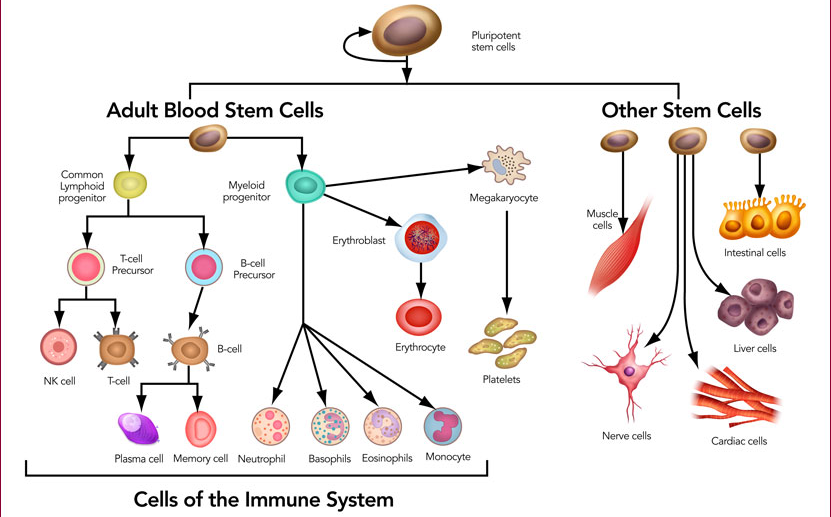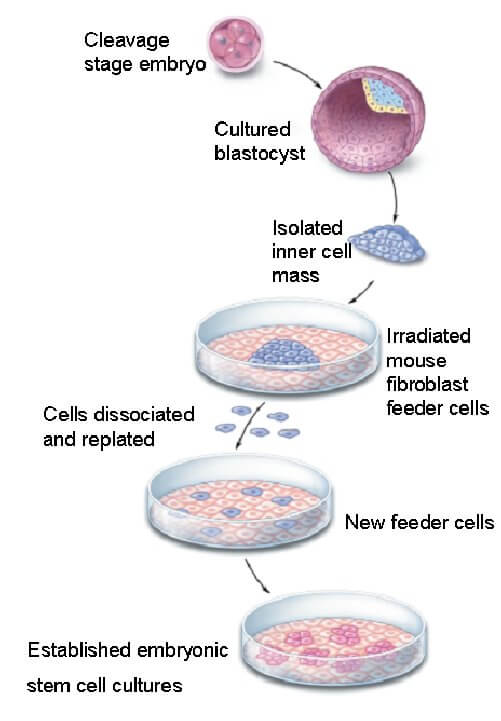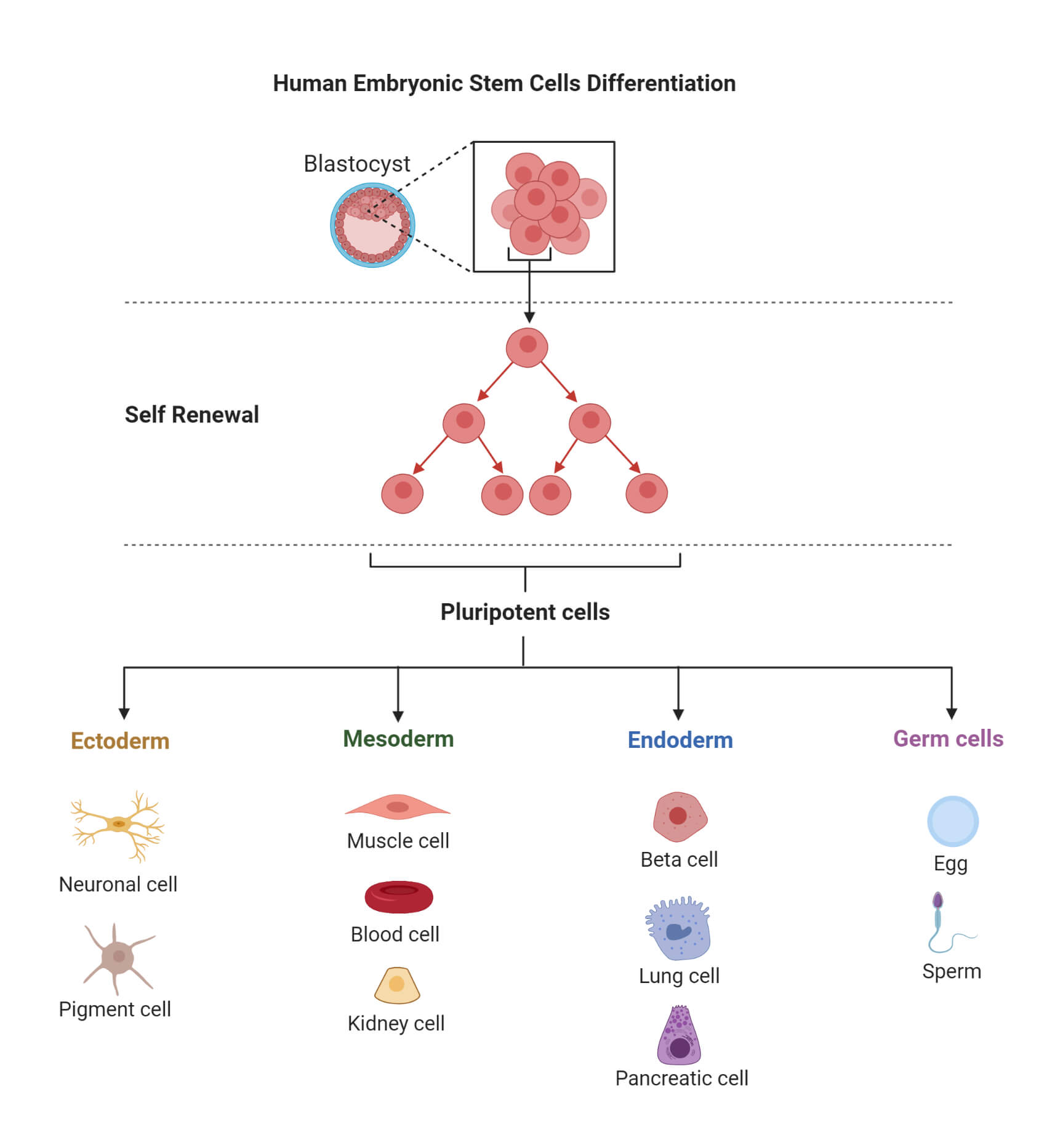Describe How Stem Cells Are Used in Biotechnology
Scientists are trying to formulate better and more personalized treatment modalities against some seemingly irremediable diseases by harnessing bodys own stem cells and stem cell niche. In this article five different types of stem cells are discussed.

Stem Cells An Overview Sciencedirect Topics
Understanding the biology of disease and testing drugs.

. Currently there is a chance for stem cells to become more widely used than synthetic materials. For example bone marrow contains adult stem cells which can give rise to all the types of blood cells. Research on stem cells continues to advance knowledge about how an organism develops from a single cell and how healthy cells replace damaged cells in adult organisms.
Today more than 1100 clinical studies the overwhelming majority of them using adult stem cells are being conducted to investigate the power of stem cell therapy. Given their unique regenerative abilities there are many ways in which human stem cells are being used in biomedical research and therapeutics development. We describe their initial discovery sources where they are obtained and niches where these stem cells reside the canonical phenotypic markers for.
Stem cells in pharmaceutical biotechnology. In the last few years stem cells have been used to treat many forms of cancer. So far they have only been used in research.
Feldbaum made clear that BIO members want to ensure that the promise of new therapies and cures from research using stem cells is realized in a responsible and ethical way. Biotechnology plays a big part in supporting stem cell research which supports the exploration of growing stem cells in a lab setting or in vitro. Teeth represent a very challenging material for regenerative medicine.
Start studying Biotechnology Ch5. Organizing centers act to pattern surrounding tissues during embryogenesis through the secretion of morphogens. Learn vocabulary terms and more with flashcards games and other study tools.
This could help in situations where patients may be suffering from a disease or disorder where implanting stem cells could help restore their vitality and give them a new lease on life. Stem cells are progenitor cells that are capable of self renewal and differentiation into many different cell lineages Stem cells have potential for treatment of many malignant and non-malignant diseases Peripheral blood stem cells are used routinely in autologous and allogeneic bone marrow. Stem cell use in dentistry.
Some scientists believe that similar uses of stem cells could eventually treat diseases as diverse as diabetes nerve disease Alzheimers and hearing loss. Multiple populations of stem cells have been indicated to potentially participate in regeneration of injured organs. Stem cells have the remarkable capability to self-renew in an undifferentiated state and to differentiate into many types of cells with specific functions upon receiving appropriate triggers.
Stem cell research is one of the most fascinating areas of contemporary biology but as with many expanding fields of scientific inquiry research on stem cells raises scientific questions as rapidly as it generates. Recombinant DNA Technology 17. Choo in Comprehensive Biotechnology Third Edition 2011 Abstract.
Pluripotent stem cells being used in research today mainly come from embryos hence the name embryonic stem cells. Especially embryonic stem cells ESC and recently inducible pluripotent stem cells iPS receive a marked attention from scientists and clinicians for regenerative medicine because. In the tissues of many developed organs scientists have identified so-called adult stem cells that retain a portion of the ability to differentiate into other cell types.
Stem cells hold the potential for manifold applications in biotechnology-based next-generation therapeutics. Human embryonic stem cells human-induced. Stem cell technologies are being used in many types of diseases that involve disease-causing cells such as Alzheimers Parkinsons and Multiple Sclerosis.
In this article five different types of stem cells are discussed. Stem cells in bone marrow replenish a bodys supply of blood cells. Self-organization of human dorsal-ventral forebrain structures by light induced SHH.
Adult stem cells have been used in cancer treatments and to produce new organs. The development of fully defined culture conditions for human embryonic stem cells hESCs should enhance experimental reproducibility reduce unwanted contaminants and facilitate scale-up production. The primary role of adult stem cells is to maintain and repair the tissue in which it is found.
Stem cells are also being explored for their properties to replace cells lost in degenerative diseases and for repairing cells in damaged tissues a field known as regenerative medicine. The inability of a persons body to control the glucose level in the bloodstream. Stem cells can divide and produce identical copies of themselves over and over again.
Advancement of fundamental research techniques like tissue. Specialized cells such as blood and muscle do not normally replicate themselves which means that when they are seriously damaged by disease or injury. They are difficult to recreate because of their function in aspects such as articulation mastication or aesthetics due to their complicated structure.
Human embryonic stem cells human-induced pluripotent stem cells neural stem cells mesenchymal stem cells and hematopoietic stem cells. Self-renewal is the defining property of stem cells. In the statement submitted to Harold Shapiro PhD Chair NBAC Mr.
This is why a bone marrow. Bone marrow transplants a common treatment for leukemia patients are one form of stem cell technology. Stem cells are also being tested to treat autoimmune diseases rheumatoid arthritis and other inflammatory diseases.
Pre-implantation embryos a few days old contain only 10-15 pluripotent cells in the inner cell mass Figure 1. Stem cells are minimally manipulated meaning they are subjected to minimal manipulation when stem cells are taken from an individual subjected to minor procedures like rinsing cleaning and resizing and do not undergo any other processing steps that may alter their function before being implanted into the same individual. Embryonic stem cells can differentiate into ALL specialized cells whereas adult stem cells cannot.
If genetic research can explain the. Scientists are trying to formulate better and more personalized treatment modalities against some seemingly irremediable diseases by harnessing bodys own stem cells and stem cell niche. Scientists can use stem cells to learn about human biology and for the development of therapeutics.
This process is called self-renewal and continues throughout the life of the organism. Stem cells hold the potential for manifold applications in biotechnology-based next-generation therapeutics. Those pluripotent cells can be isolated then cultured on a layer of feeder cells which provide unknown cues for many rounds of proliferation while.

The Stem Cell Hierarchy Stem Cells Are Defined By Their Potency Or Download Scientific Diagram

The Little Known Advantages And Disadvantages Of Stem Cell Research Biology Wise In 2022 Stem Cell Research Stem Cell Therapy Stem Cells

Stem Cells Definition Properties Types Uses Challenges

Not All Stem Cells Are Created Equal Science Biology Stem Cells Teaching Biology

Stem Cells Definition Properties Types Uses Challenges

Stem Cells A Brief History And Outlook Science In The News

Stem Cell Quick Reference Stem Cells Stem Cell Research Somatic Cell

Biotechnology Powerpoint By Bio4u High School Biology Tpt Biotechnology High School Biology Class High School Biology

Stem Cells Definition Properties Types Uses Challenges

Highlighted Article Flyer For The Journal Current Stem Cell Research Therapy Stem Cell Research Stem Cells Stem Cell Therapy

The Birth Of A New Baby Brings Happiness In The Family As Well As It Also Brings New Responsibilities Stem Cell Research Stem Cell Therapy Stem Cell Transplant

Biotechnology Virtual Lab Worksheets Biotechnology Teaching Biology High School Biology Lessons

Regenerative Medicine In Thailand Regenerative Medicine Stem Cell Therapy Medicine






Comments
Post a Comment